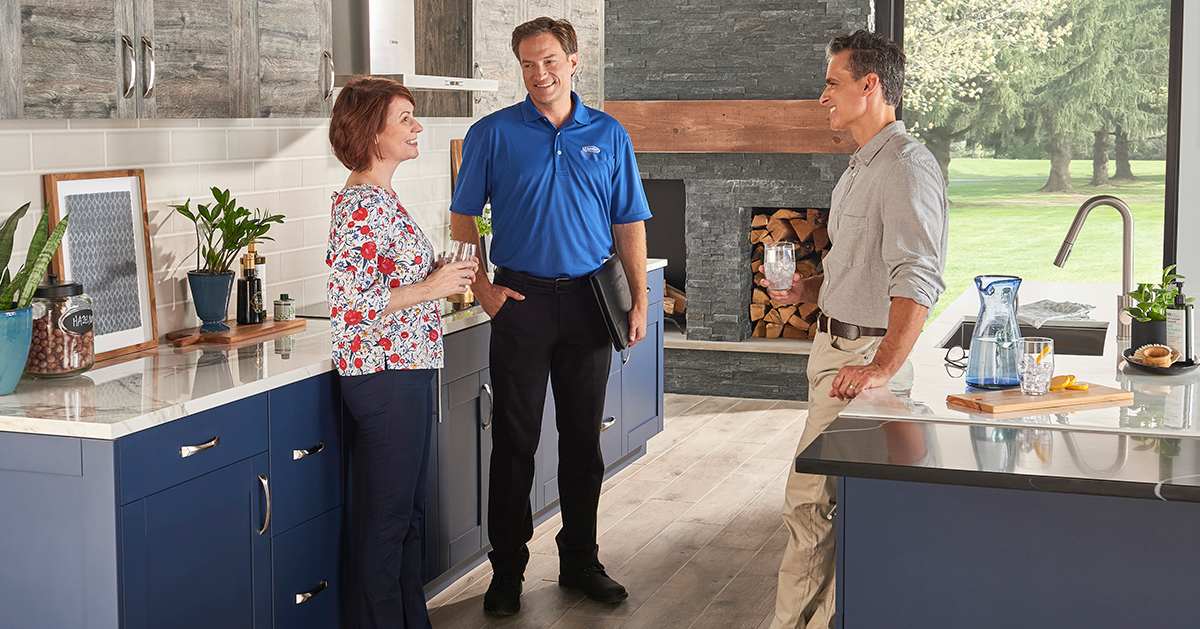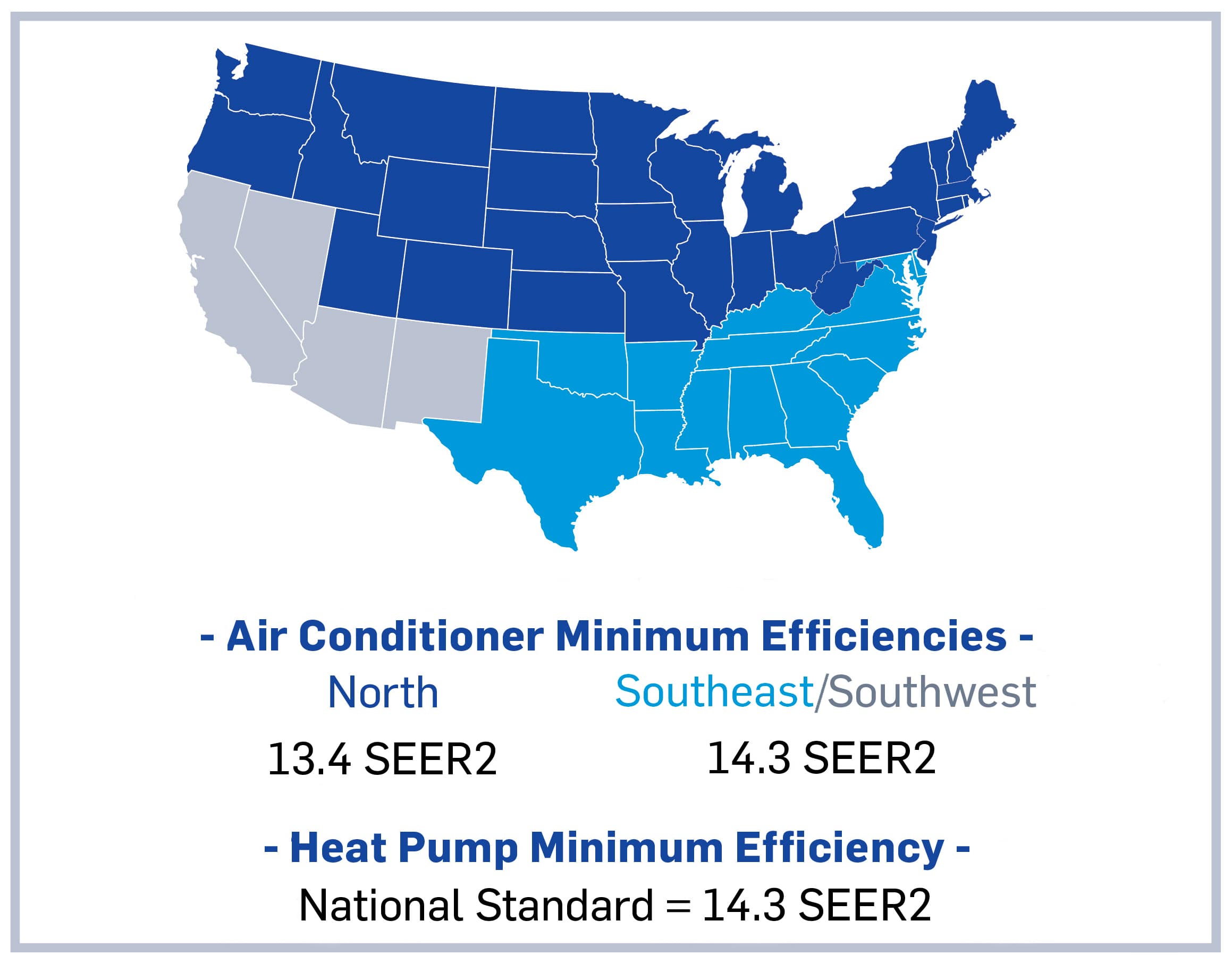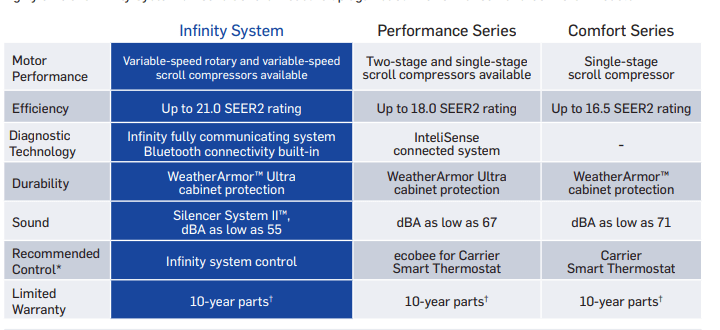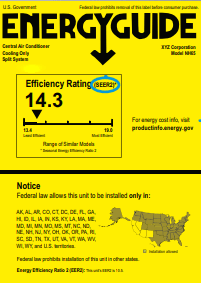Understanding SEER Ratings: A Guide to SEER Meaning
When it comes to energy efficiency, understanding SEER ratings is crucial. SEER, which stands for Seasonal Energy Efficiency Ratio, measures the cooling efficiency of an air conditioner or heat pump. This guide explores the significance of SEER ratings, the transition to SEER2. Additionally, we'll provide insights on selecting the right SEER2 rating based on your specific needs and how SEER2 ratings contribute to energy savings.

SEER Meaning: What is a SEER Rating?
A SEER rating, or Seasonal Energy Efficiency Ratio rating, measures the cooling efficiency of an air conditioning system. It's a standard used to assess and compare the energy efficiency of different air conditioners. The higher the SEER rating, the more energy efficient the system is.
SEER ratings are calculated by dividing the cooling output of an air conditioner during a typical cooling season by the total electric energy input during the same period. This ratio indicates how effectively the system converts electricity into cooling power.
Why SEER2 Matters for Your Home
Understanding the meaning of SEER2 helps consumers make informed decisions when purchasing an air conditioner. Higher SEER2 ratings signify more energy-efficient systems, leading to lower cooling bills and a reduced environmental impact. A higher SEER2 rating means the system consumes less electricity to produce the same amount of cooling compared to a lower SEER2-rated system, translating to significant energy savings over the system's lifetime. Even a small increase in SEER2 can lead to noticeable savings over the life of your system, while reducing your carbon footprint.
| SEER2 Rating | Efficiency Level | Impact |
| 13-14 | Standard | Meets minimum federal requirements; basic efficiency. |
| 15-16 | Mid-range | Moderate energy savings; good balance for many climates. |
| 17-19 | High-efficiency | Potential for significant savings on monthly energy bills; quieter operation. |
| 20+ | Ultra high-efficiency | Best energy savings; ideal for long-term investment and sustainable homes. |

SEER Rating vs. SEER2: Understanding the Difference
When choosing an air conditioning system, understanding the difference between SEER rating and SEER2 is crucial. Both terms relate to energy efficiency standards but represent different sets of regulations and guidelines.
SEER2 replaced SEER on January 1, 2023 to improve the accuracy and consistency of energy efficiency ratings for air conditioners and heat pumps. The SEER2 rating includes more stringent testing methods that account for real-world conditions, such as ductwork losses and airflow resistance, which were not fully considered in the original SEER testing.
This change ensures a more accurate representation of a unit’s energy efficiency, encouraging manufacturers to produce more energy-efficient systems and helping consumers make more informed choices. SEER2 also aligns with updated Department of Energy regulations aimed at reducing energy consumption and improving environmental impact. The Department of Energy established 14.3 SEER2 as the minimum allowable cooling efficiency for residential, air-source, split-system heat pumps, as of January 1, 2023.
Jennifer Fletcher, owner of Modern Air Solutions in Gurnee, IL, reminds homeowners to be mindful of SEER2 versus SEER rating when evaluating air conditioners and heat pumps.
“SEER 2 is the new rating on all equipment,” Fletcher said. “If we are looking at SEER only you may be purchasing a unit that is older and should be worried about warranties.”

SEER2 vs. EER2
SEER2 (Seasonal Energy Efficiency Ratio 2) and EER2 (Energy Efficiency Ratio 2) are updated efficiency ratings for HVAC systems, reflecting more accurate real-world performance. But how are they different?Difference Between SEER2 and EER2
- SEER2 measures a system’s seasonal energy efficiency, considering temperature variations over an entire cooling season. It provides a broad view of overall efficiency.
- EER2 evaluates efficiency at a specific outdoor temperature (95°F), showing how well the system performs under peak cooling conditions.
When to Consider SEER2 vs. EER2
- SEER2 is best for areas with moderate to variable climates, as it accounts for seasonal efficiency.
- EER2 is ideal for hot, dry climates, where systems frequently operate at maximum cooling capacity.
Benefits of a High SEER2 Rating
A high SEER2 (Seasonal Energy Efficiency Ratio) rating offers several benefits for homeowners, including lower cooling costs and reduced environmental impact.
One major advantage of a high SEER2 rating is the potential for lower cooling bills. SEER2 measures an air conditioner's efficiency by comparing its cooling capacity to the energy it consumes. A higher SEER2 rating means the system is more efficient, resulting in reduced energy consumption and lower monthly bills.
Additionally, a high SEER2 rating contributes to a reduced environmental impact. Air conditioners with higher SEER2 ratings consume less energy, leading to lower greenhouse gas emissions. By choosing an air conditioner with a high SEER rating, homeowners can minimize their carbon footprint and contribute to a greener environment.
Choosing the Right SEER2 Rating for Your Needs
When selecting the right SEER2 rating for your needs, several factors must be considered. Understanding these factors will help you make an informed decision and ensure your cooling system operates efficiently while meeting your specific requirements.
- Climate conditions in your area. Different regions have varying temperature and humidity levels, which can impact your cooling system's performance. In hotter climates, a higher SEER2 can provide significant savings on cooling bills over time. If you use air conditioning frequently, a higher SEER2 rating may improve efficiency and reduce costs.
- Finding the optimal balance between cost and efficiency. Higher SEER2 ratings generally offer greater energy efficiency, resulting in lower cooling bills. However, they can also come with a higher upfront cost. It's essential to assess your budget and determine the level of energy savings you desire to strike the right balance.

SEER2 Rating and Energy Savings
Calculating potential energy savings based on SEER2 rating is an essential step in making an informed decision. By comparing the SEER2 ratings of different models, you can estimate how much energy each system will consume and how much you can potentially save on your energy bills. For example, upgrading from a lower SEER2 rating of 15 to a higher SEER2 rating of 20 can result in energy savings of up to 33%.
In addition to purchasing an air conditioner or heat pump with a high SEER2 rating, here are a few other tips for maximizing energy efficiency:
- Regularly replace your air filters clean to ensure optimal airflow. Learn more about how often to change air filters and how to change air filters .
- Seal any air leaks in your home to prevent energy loss.
- Program your thermostat to adjust the temperature when you're away.
- Consider installing a programmable or smart thermostat to optimize energy usage.
At Carrier, we offer a range of high-efficiency air conditioners and heat pumps with excellent SEER ratings. Our products are designed to provide maximum comfort while minimizing energy consumption. By choosing a Carrier system with a high SEER rating, you can enjoy significant energy savings and lower cooling bills.

Carrier's Commitment to High SEER2 Ratings
As the demand for energy-efficient HVAC systems continues to rise, manufacturers are constantly developing new technologies to improve SEER2 ratings.
One key technological advancement in improving SEER2 ratings is the use of variable speed compressors . Traditional HVAC systems have single-speed compressors that operate at a fixed speed, resulting in constant on-off cycles and energy wastage. Variable speed compressors, on the other hand, can adjust their speed based on the cooling needs of the space, resulting in more consistent temperatures and significant energy savings.
In addition to technological advancements, government regulations and industry standards play a crucial role in driving the improvement of SEER2 ratings. These regulations aim to ensure HVAC systems meet minimum efficiency requirements, reducing energy consumption and greenhouse gas emissions. By complying with these regulations, manufacturers are compelled to innovate and develop more sustainable HVAC solutions.
Carrier, a leading HVAC manufacturer, is committed to providing sustainable HVAC solutions with high SEER2 ratings. With a focus on research and development, Carrier continuously introduces cutting-edge technologies to improve energy efficiency and reduce environmental impact. Their innovative products not only meet industry standards but also exceed customer expectations for comfort and sustainability.
As technology continues to advance and regulations become more stringent, homeowners can expect even higher SEER2 ratings and more energy-efficient HVAC systems.

Connect With Your Carrier Dealer On SEER2
Carrier offers a wide range of options catering to different needs and budgets. From their Infinity Series, which boasts some of the highest SEER ratings in the industry, to their Performance and Comfort Series, Carrier provides energy-efficient solutions for every home. Your knowledgeable local Carrier dealer can assist you in choosing the ideal SEER2 rating for your specific requirements, considering factors such as climate conditions and budget. By selecting the right SEER2 rating, you can enjoy enhanced comfort, energy savings, and peace of mind.
Frequently Asked Questions About SEER Rating
Upgrading from 14 SEER to 16 SEER can be worth it if you plan to stay in your home long-term. The 2 SEER increase will improve energy efficiency, reduce cooling costs, and provide better comfort. However, the savings might take a few years to offset the higher upfront cost.

